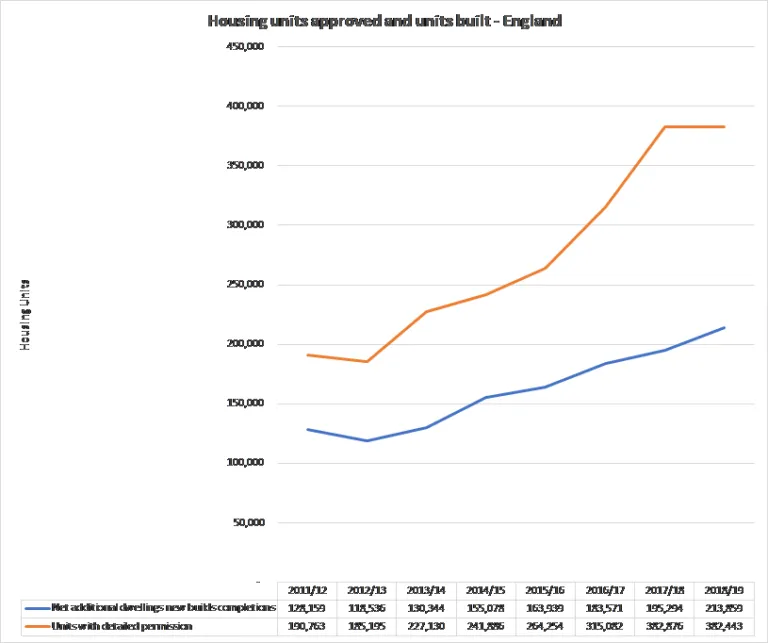Why investment in social housing needn’t wait for planning reform
Published: by Alastair Harper

Since 2011, 380,000 homes have received planning permission but have not yet been built out. That’s according to our latest research into permissions.
These numbers demonstrate that there is more we could do to speed up the delivery of new homes – and that the best way to increase the supply of genuinely affordable homes is to invest in social housing now.
At a time when we are losing tens of thousands of social homes every year, we must find every route we have to getting to the homes we need. And thinking this can wait for the years it will take to review our planning system just won’t do.
Our planning system requires improvements, and we are ready to work with the government to ensure we have a system that achieves the prime minister’s goal of delivering more social homes – though there’s a lot of questions to be answered on how we ensure this. But ultimately, while we work towards those answers, we can’t afford to stand still. That’s why we are calling on the government to bring forward its Affordable Homes Programme and spend it in two years (rather than five), to save thousands of jobs and get people the homes they need.
Given this urgency, it was disappointing to read in the Telegraph’s coverage of this analysis that the Home Builders Federation (HBF) characterised our research as ‘misleading’. We know how critical these findings are, so wanted to clarify here from where the numbers came.
Our analysis is the latest issue of long-standing robust research that we have conducted every year for the last three years on homes that should have been built. This is the first time that such a claim has been made about this research.
In technical terms, the analysis examines the difference between the number of permissioned units and completed homes. The HBF claims that the numbers used included homes on sites where construction was underway, and homes that had already been built. However, we used data sources widely agreed to be the best, most comprehensive data. Including completed homes only makes the data more robust.
Our data sources
The data comes from analysis of the HBF’s own housing pipeline report, which details what units have received detailed planning permission. We used HBF’s own definition of a ‘permissioned unit’ to assess homes that have been permissioned.
And we used the government’s own housing figures to determine homes that have been supplied.
While our analysis may omit a small number of units on which building has started (to include unbuilt units would reduce the gap), the reality is this is still not a completed unit in the government’s own definition – and certainly not enough to significantly alter the data. It’s also important to reflect that of the several data sources publicly available, we used the one with the highest number of completions and we exclude anything which has been given permission in the last two years. This is a conservative approach to estimating this. The truth is that for the past eight years alone, completed units have been, on average, 41% lower than permitted units.

Of course, if the HBF has access to the full data that our analysis is based on, it would be lovely if it could publish what we can’t: the average gap between permission being granted and a home being started, and/or completed.
How we calculated the figure
We have already published the full detail of how we calculate this figure. But, put simply:
- we take the number of units with detailed planning permission (as defined by Glenigan for HBF)
- we use units completed as reported by the Ministry for Housing, Communities and Local Government (MHCLG) (from Net Additions New Builds)
- we assume that developers take on average two years to build a unit (e.g. if a home is permissioned in 2015, we assume it should get built in 2017)
- therefore, we compare the permissions granted between 2011/12 – 2016/17 with completion data between 2013/14 – 2018/19
- finally, we subtract homes built from homes permitted to check if there is a gap
Speed of decision-making vs. lack of investment in social housing
This matters because we need a thorough understanding of the problem if we are to hope to tackle it. And one thing everyone agrees on is that we need to unlock more social homes across our country. Given this, it might be worth turning to the words of Oliver Letwin, the former cabinet minister, who was asked by the government to look at exactly this. He wrote to the chancellor with two fundamental reasons for how slow it has been to deliver homes in this country:
- builders will only build homes as fast as the market will buy them, meaning construction is dependent on households’ ability to buy
- a lack of diversity of tenure on sites means that developers have put all their eggs in one basket. If the market slows, they can’t build out
That is precisely why we believe, now more than ever, that the solution is more investment in social homes. Social homes are in such demand there will be no delay in demand. And as we head into the dark water of economic uncertainty, it’s investment in social homes now that is precisely what the country needs to get us through.